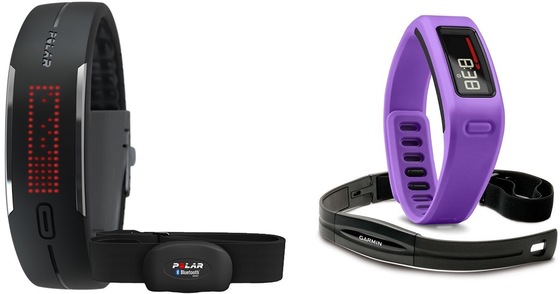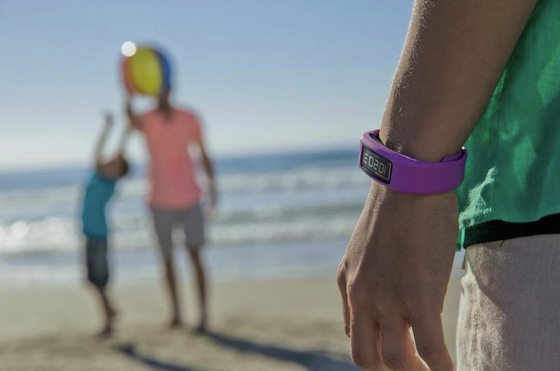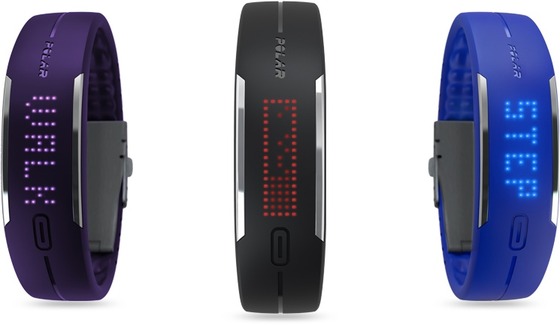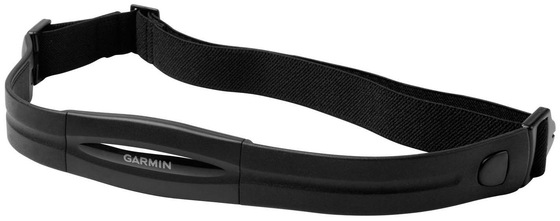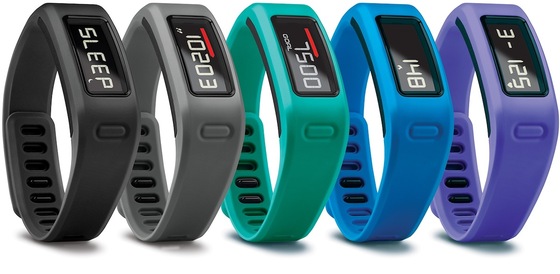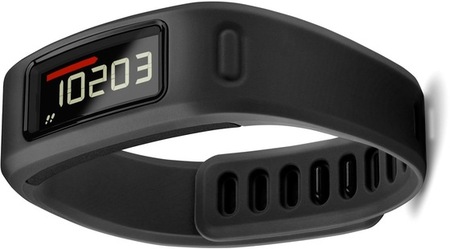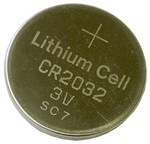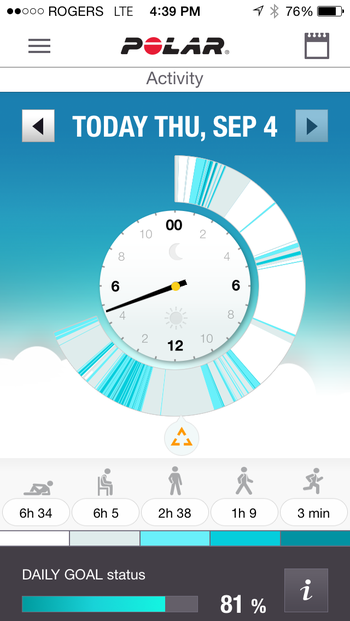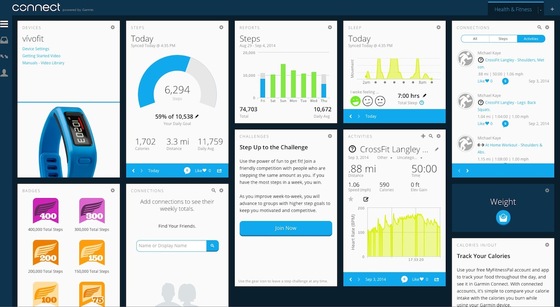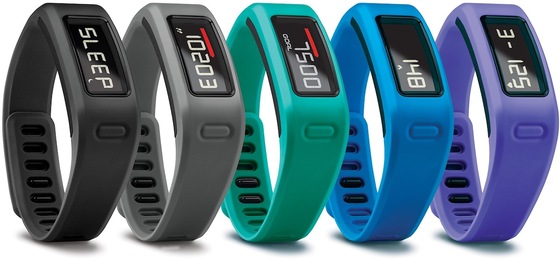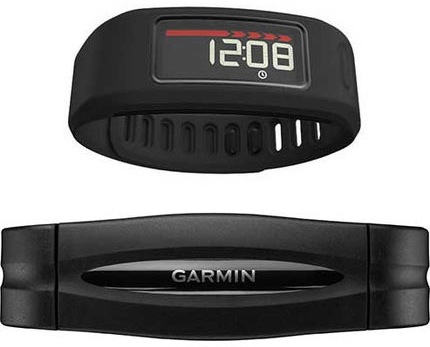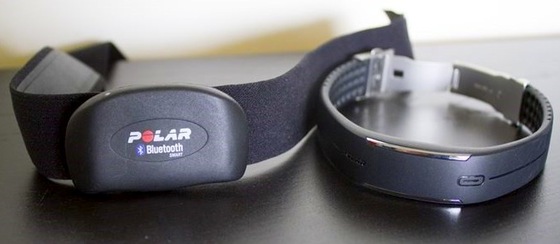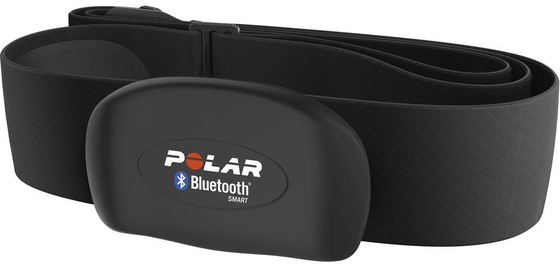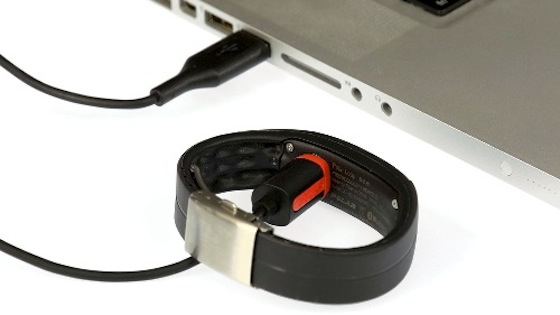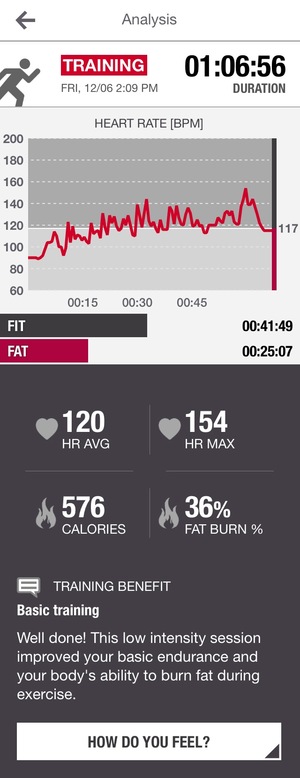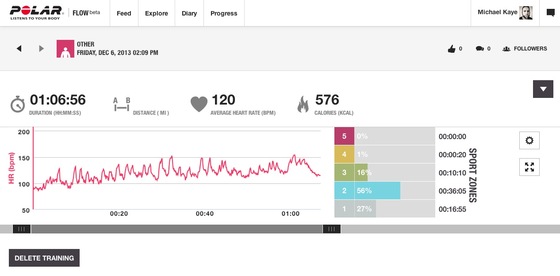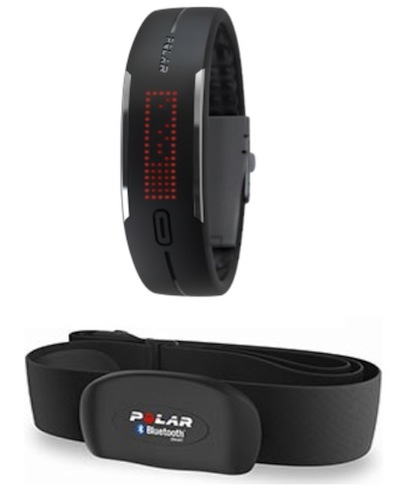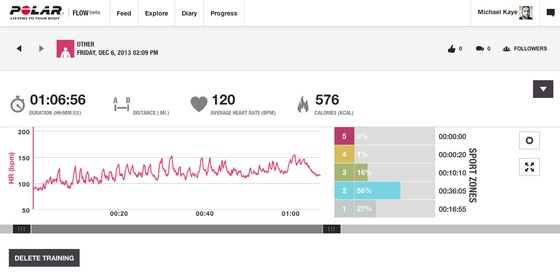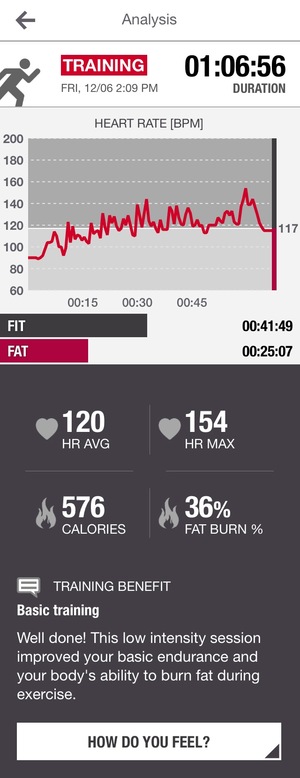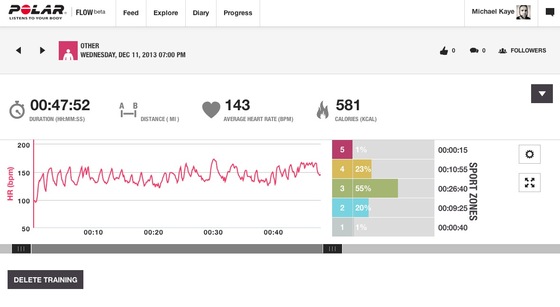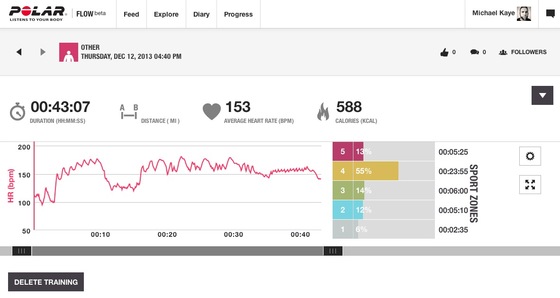Garmin VivoFit versus Polar Loop with HRM Review
 Thursday, September 4, 2014 at 10:36PM
Thursday, September 4, 2014 at 10:36PM I thought I would make this review of the Garmin VivoFit for more of a head to head comparison to the Polar Loop. The reason for this is because both devices pretty much do exactly the same thing, and I have had a lot of questions from people asking about which one I think is the best unit to get. Keep in mind, you need to have a compatible Heart Rate Monitor to really take advantage of both of these units, especially if your workouts are not very step based. Combining your day to day motion based activity along with the Heart Rate Monitors super detailed workout tracking, offers very accurate feedback in terms of how many calories you are burning each day, this is especially important if you are tracking your food intake, and want to either gain weight, lose wight or maintain weight.
NOTES:
- HRM Refers to "Heart Rate Monitor"
- I bought the Garmin VivoFit bundle that came with the Garmin HRM.
- I bought the Polar Loop and Polar H7 HRM separately.
- Costs where comparable.
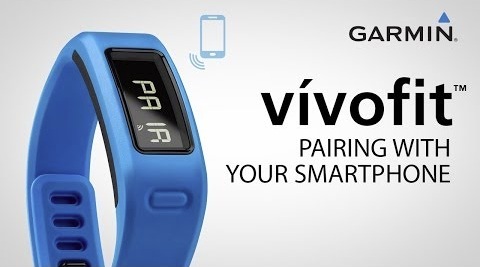
Pairing:
Both devices pair to their respective Apps using Bluetooth, there is no need to pair first within your smart phone Bluetooth settings. You will need to either have accounts setup, or will need to setup an account to pair your device to your smart phone.
Syncing:
Both units come with USB adaptors for your PC or Mac so that you can sync directly to your computer and to the respective cloud based Web Apps. The Polar Loop uses a USB cable that will sync and charge the device while it is plugged in. The Garmin VivoFit has a USB to ANT+ dongle for syncing only, since it has non-rechargeable user replaceable batteries built in. You will need to download software to your computer to sync either fitness band with your computer.
Both bands can be paired to your smartphone App via Bluetooth. The Garmin VivoFit can be synced on demand by pressing and holding down the function button until the word "Sync" is displayed on the screen. The Polar Loop does not really synced on demand but will do so on it's own periodically. I did find that if you cycle through the display screen it will generally force it into sync mode.
Counting Activities & Calories:
Both devices have the ability to count activity on their own via built in motion sensors, and also when hooked up to a Heart Rate Monitor. When hooked up to the HRM, they will base your activity expenditure on your heart rate instead of on your movement since your heart rate will give the most accurate indication of the load you are placing on your body.
I found that when the Heart Rate Monitors where begin read, both systems where fairly close in terms of heart rate beats per minute at any given time and both devices gave similar calorie expenditures. Sometimes the Polar Loop with H7 HRM paired would give more calories per workout and sometimes the Garmin VivoFit with HRM paired would give more calories for an activity.
In terms of counting calories based on the bands motion sensors, the Polar Loop was definitely more generous and seemed to give a lot more credit for non-step based movements. The Garmin VivoFit did not give very much credit for anything that was not a legitimate step so for instance if you where vacuuming or shuffling around, even if doing so rather intensely, in my opinion the VivoFit would kind of short change you a bit on calories in this area. The Polar Loop was definitely better at reading more subtle movements and giving partial credits for such activity.
I found it interesting that even though the Polar Loop seemed to give out more calories on any given day, the Garmin VivoFit did give me more calories while I slept, so I am assuming the Garmin base caloric rate is set higher than in the Polar software.
When considering motion sensor activity and HRM activity combined, I found that the Polar Loop would give me as much as 300-500 calories more per day than the Garmin VivoFit! Which one was more accurate? Who really knows, perhaps averaging them out would be the best approach!
Bugs:
There will always be bugs with pretty much any hardware and software system, this is to be expected.
The main bugs I have found with the Polar Loop have been syncing related ones, most of them seem to have been workout out now but my fear is updating Firmware and or App Software since it seems like Polar has in the past, fixed one bug, but then replaces it with a new bug.
Here are some of the bugs I have experienced on the Polar Loop:
- Memory full when memory is not full.
- Flight mode hard to active and inactivate.
- User setting being changed back to defaults (Things like which hand you prefer to wear it on).
- Inconsistent syncing
- Not syncing an activity (workouts wearing the HRM) and even some days where only half of the days activity would sync.
The main bugs so far with the Garmin VivoFit are as follows:
- Some activities (workouts wearing the HRM) did not show up as an activity even though I did get credit for the calories burned.
- When working out past midnight while wearing the HRM, the activity will get truncated so only the workout portion after midnight will be displayed in the activity. I do still get full credit for all the calories burned while wearing the HRM, I just can not see the pre-midnight data in the activity.
- And lastly… the Garmin folks have decide that CrossFit is not a legitimate sport or fitness activity because they do not have it in the list of activities you can select when doing a workout, even though more obscure fitness activities like driving, flying, boating, standup paddle boarding are viable options.
Size, Fit & Comfort:
In a nutshell both the Garmin VivoFit and Polar Loop are about the same size, weight and have similar comfort while worn on the wrist.
The Polar Loop uses a watch style clasp but does need to be cut to fit by the user when they first get it. This system is very stylish and even if the clasp where to open, it will not easily fall off the wrist and you would also notice it has opened since it would be flopping around on your wrist.
I was a bit concerned with the Garmin VivoFit as it had a similar overlapping snap together band similar to the Fitbit products which I did find would come undone once in a while and if you didn't notice this as it happened, there was the possibility of losing the band. That said I have not had any such instances where the band has come apart either during everyday activity or while working out. One advantage to this design is there is no need to cut the strap to size when you first get it. You also get a large and small strap for different sized wrists.
Another nice touch to the Garmin VivoFit strap is that it can be replaced and swapped out for a new one or even a different color if you choose to.
(HRM) Heart Rate Monitor Strap:
After using my Polar Loop H7 Heart Rate Monitor for some time with it's full elastic wrap around strap, I was not sure if I would like the somewhat bulkier Garmin HRM chest strap as there is a plastic portion that pretty much goes around the entire front of your chest.
One of my concerns was would the Garmin HRM take up a lot of space in my bag of gym gear? the Garmin HRM does not wrap up as compact for sure as the Polar H7 HRM, but it is not really that bulky and in terms of comfort, it feel's a bit better than the Polar H7 HRM.
I also found that the Polar H7 HRM if bumped hard enough could come off the strap mid workout while the Garmin HRM does not have this problem since the HRM is built right into the front of the plastic strap portion.
I also like that I can put on the Garmin HRM before I start my workout and then when I am ready to start, I simply place the Garmin VivoFit screen into the "Heart Rate" mode and it syncs to the HRM right away and starts a new activity session. Once I am finished my workout I hold the function button down while in the "Heart Rate" screen until the word "Off" is displayed on the screen.
The Polar H7 HRM seems to work best when you immediately pair to the Polar Loop by cycling through the display setting till you can see the Heart Rate being displayed. Once finished your workout, you need to take off the Polar H7 HRM to stop the activity recording.
Looks:
Looks are really more of a subjective thing and each person will have there own opinion as to which one looks best to them. At a glance, both the Polar Loop and Garmin VivoFit kind of look the same since mine are both the black versions, keep in mind you can get these bands in a variety of colors.
Upon closer inspection I would say the Polar Loop has a bit more style with it's Chrome highlights and wrist watch based clasp. The Polar Loop also has that extra eye candy when you consider the red LED display.
I still personally like the Garmin VivoFit all flat black simplistic look as I don't really want my Fitness band to be too flashy since that is not why I got it.
Quality & Water Resistance:
I have been wearing my Polar Loop for a lot longer than my Garmin VivoFit and so far so good, no hardware problems at all, everything still works exactly the same as when I got it which was last December of 2013.
Both Fitness bands only really have one button too worry about and in the case of the Polar Loop, it's more of a sensor than a mechanical button. For both units the internal electronics are safely housed inside the fitness bands sealed from all outside moisture and dust.
Speaking of moisture, both the Loop and VivoFit are suitable for showering and swimming, the Garmin VivoFit with a 5 ATM or 50 meter rating and the Polar Loop good down to 20 meters or 60 feet, so no worries using either of them in the shower or pool.
Display:
Both the Loop and VivoFit have a display on the top of the band, Polar decided to use an LED display while Garmin went with an LCD display. There are some pros and cons to both of these screen types.
The Polar Loop with its LED screen looks kind of flashy with the bright red LED lights, it is also very easy to see at night but in bright sunlight can get washed out and almost unreadable. The LED lights also use a lot of energy while on, so the more you check the screen, the more power that is used up which could mean more frequent recharging.
The Polar Loop allows you to switch between the following display functions: Activity, Calories, Steps, Time, and Heart Rate when the HRM is paired.
The Garmin VivoFit screen is based on an LCD display which is always on but uses very little power, this design is so efficient that Garmin decided to go a charge-less (We will get more into this in the nest section).
One drawback of the LCD display is that you can not see it at all at night and to save energy, Garmin chose to forgo a backlight. It's a good thing most of us have our handy smartphones around to see what time it is at 3 in the morning…
One key feature to mention is that because the Garmin VivoFit LCD screen is always on, you can quickly look at the band while doing a workout to check your Heart Rate. You can check your Heart Rate on the Polar Loop but you will need to activate the screen by pressing the sensor first, but the LED screen will go off rather quickly.
The Garmin VivoFit allows you to switch between the following display functions: Steps, Goals, Distance, Calories, Time, Date, and Heart Rate. There is a also red bar along the top of the display that grows longer as you become stationary for too long reminding you that you need to get up and move.
Battery Life:
One huge difference between these two devices is the choice in types of batteries used.
Polar decided to go with a non-removable rechargeable battery in the Loop that you will need to recharge every 2-4 days depending on how often you look at the screen and how often you pair with the HRM. Over time you may need to recharge more often as the battery gets older but more than likely by the time the battery losses its efficiency, you will have moved on to a newer model or new style fitness tracking device all-together.
Garmin on the other hand went with a user-replaceable battery system in the VivoFit which amazingly gets a claimed year or more worth of battery life before you are required to change the batteries (which by the way are standard inexpensive 3-volt CR2032 batteries found in most electric shops).
Smart Phone Software:
Both the Garmin VivoFit and Polar Loop have Apps that are compatible with iOS and Android devices.
In terms of saying which App is better or worse, again this will come down to individual user experience but there are a few key points I want to bring up.
I found both companies Apps to be fairly user friendly and when it came to displaying the Fitness Band data, everything was pretty much there for the viewing. Information like: Calories burned, Steps taken, Distance moved (Estimated), Goals, Sleep time, Activity sessions, and your body weight if you choose to enter it.
Both the Loop and the VivoFit allow you to see your activity HRM recorded workouts in full detail showing you your heart rate as a graph and displaying info like: Maximum heart rate, Average heart rate, Calories burned, and Workout time and duration.
One aspect I was fond of on the Polar Loop was the way it not only tracks your non-step based movements in more detail than the Garmin VivoFit, but it also displayed this movement into different categories like: Lying down, Sitting, Standing, Walking and Running. The Polar Loop Fitness Band was also able to figure out, based on you movements, when you where sleeping which on the Garmin VivoFit requires manual entry.
Another interesting discovery I found was that you have to have an Internet connection to sync the Garmin VivoFit to the Garmin Connect App. It seems that all the data is immediately sent to the "cloud" which also means if you want to view any current or past data, you will need to have an Internet connection. The Polar Flow App is not dependent on having an Internet connection at all times as it seems to store data within the App on the phone and then syncs this data with any cloud based data you may have.
One other difference worth mentioning is the way in which each device determines your goals for the day. The Polar Loop has a static preset activity goal that is determined by what you enter into your User "Physical settings". There are some tips on how to meet this activity goal provided as different types of activities you can do. The Garmin VivoFit uses an adaptive method for calculating how many steps your daily goal should be based on previous day to day and on going activity.
Web App:
Both Garmin and Polar have dedicated Web Applications that allow you to view the data recorded on the Fitness bands and their respective HRM's. The information is similar to what you will find within the Smart Phone Apps but since you have the entire computer screen to view it on, you can see more information at once and sometimes in more detail.
Within the Web Applications there is usually more specifics you can enter in terms of you user profile and personal settings.
I personally like to enter my activity (or workout details) using the Web Applications since I find it easier to enter on the computer with the large screen and full size keyboard, rather than the small screen and keyboard when using the iPhone App.
Pros Over Each Device:
- Polar Loop screen can be seen at night very easily.
- Polar Loop does a better job at factoring in smaller non-step based movements.
- Polar Loop auto detects when you fall asleep and when you wake up.
- Polar Loop has an Airplane mode if that is important anyone ;)
- Polar Loop has a non-mechanical function button that is less likely to cause future hardware problems.
- Polar Loop has a slight edge in terms of fashion or looks but this is rather subjective.
- Garmin VivoFit screen is much easier to see in bright daylight and stays on all the time which is great for reading your heart rate while working out if you have the HRM paired.
- Garmin VivoFit doesn't need to be charged every 3-4 days with its 1 year battery.
- Garmin VivoFit can be synced on demand by pressing and holding the function button down.
- Garmin VivoFit strap doesn't need to be cut to size by the user before you can wear it.
- Garmin VivoFit HRM is easier to start and stop the HRM for workouts.
- Garmin VivoFit also shows you the date on the screen, can be useful at times.
- Garmin Connect App uses adaptive goal setting based on previous day to day activity.
Cons Over Each Device:
- Polar Loop screen is hard to see in bright sunlight.
- Polar Loop has no real sync on demand option.
- Polar Loop band needs to be cut to size by user.
- Polar Loop requires frequent recharging.
- Garmin VivoFit has no back light so you can not see the display in the dark.
- Garmin VivoFit does not track or give credit to your non-step based movement very well.
- Garmin VivoFit does not auto-detect when you are sleeping.
- Garmin VivoFit needs an Internet conniption to sync with the App and view App data.
- Garmin VivoFit does not seem to have an Airplane mode.
In Summary:
So at the end of the day, both of these Fitness Band and HRM solutions are worthy choices if you are looking for a way to track your total activity throughout the day, Incorporating a Heart Rate monitor along with the Fitness bands ability to detect activity via motion will give you a much better picture of exactly how many calories you are burning as opposed to a stand alone Fitness band without an Heart Rate Monitor. So which one am I going to use as my personal Fitness Activity Tracker? I'm still not 100% sure but I may be leaning a bit towards the Garmin VivoFit mainly because it never needs charging and the process of pairing to the HRM is a bit more refined. I also kind of really like the always on screen so I can see my heart rate while working out and the ability to sync on demand.
 Garmin,
Garmin,  Polar Loop,
Polar Loop,  VivoFit in
VivoFit in  Product Review,
Product Review,  YouTube Video
YouTube Video 




